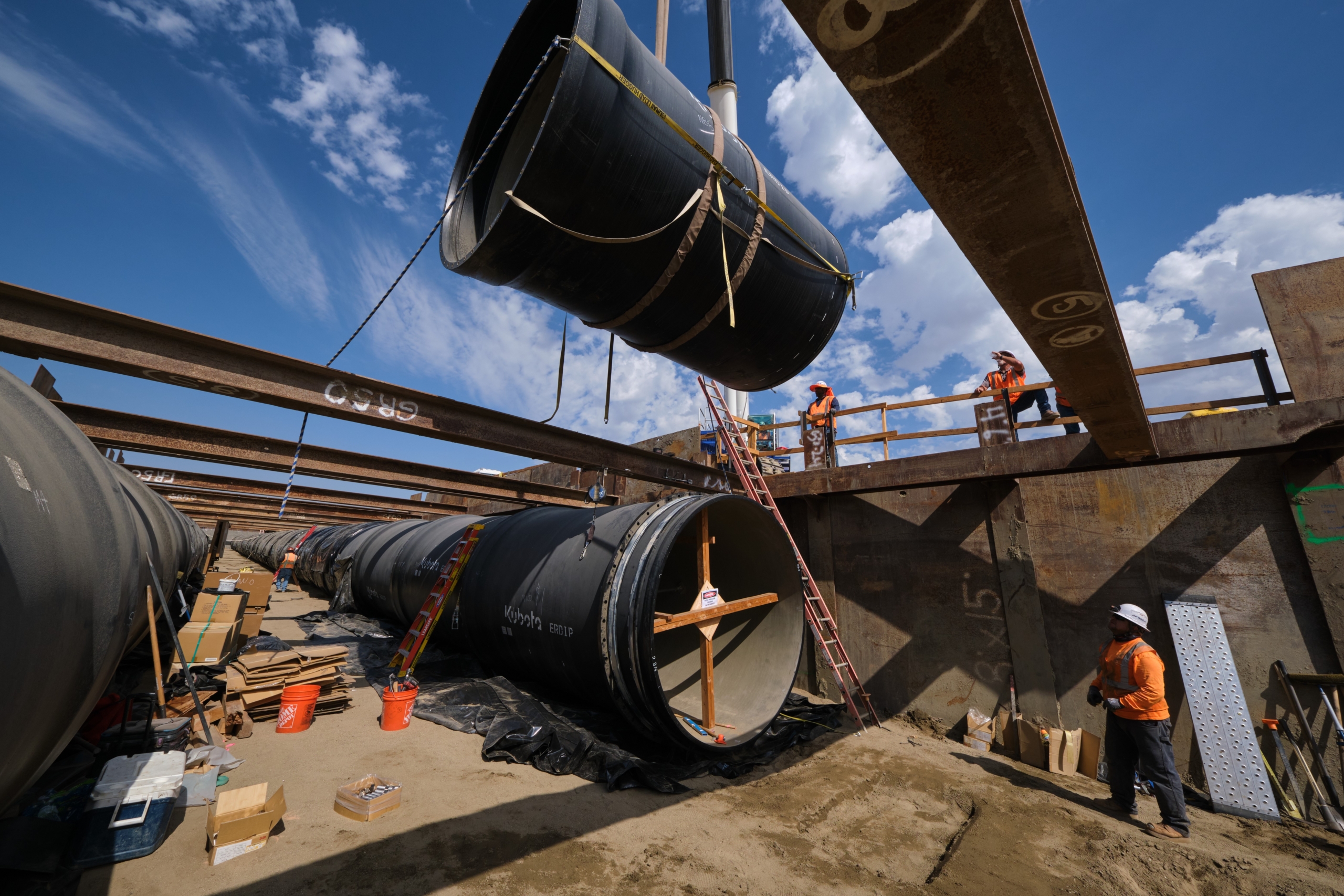Replacement of Casa Loma Siphon Barrel No. 1 Awarded Envision Silver
24-July-2025

Pipe sections are lowered into a trench in 2022. (Photo courtesy Metropolitan Water District of Southern California).
The Metropolitan Water District of Southern California has earned an Envision Silver award for its Casa Loma Siphon Barrel No. 1 Project to improve the resiliency of a major water supply pipeline vulnerable to earthquakes and damage from subsidence. The project replaces and upgrades a critical component of Metropolitan’s water distribution system, which supplies water to nearly 19 million people in six counties throughout Southern California.
The Casa Loma Siphon Barrel No. 1 pipeline segment — originally built in 1935 and extending 5 miles across the San Jacinto Valley — crosses the Casa Loma Fault and is vulnerable to earthquakes. Leaks have occurred since the 1960s resulting from displacement and settlement due to seismic activity and subsidence from groundwater pumping. Despite previous repair attempts over the years, including pipe replacement, installation of external flexible couplings, and installation of internal seals, a long-term solution had yet to be achieved.
The Casa Loma Siphon Barrel No. 1 Project replaced approximately 1,200 feet of 148-inch diameter steel and concrete pipe segments that cross the fault zone. The new siphon consists of two parallel barrels of 104-inch diameter Earthquake-Resistant Ductile Iron Pipe (ERDIP) designed to withstand up to 13 feet of horizontal displacement during an earthquake and ongoing ground settlement. The pipes were specially designed for Metropolitan and are among the largest earthquake-resistant pipes in the world. The success of the Casa Loma Siphon Barrel No. 1 Project introduces a new design for Metropolitan pipelines that will improve the resiliency of the infrastructure, secure the water supply for millions of people, and provide a new approach to designing and upgrading other pipelines throughout the region.
Quotes
“Metropolitan is honored to receive this recognition for our efforts to ensure Southern California’s water supply is resilient to earthquakes and climate-related risks and reliable for the communities we serve,” said Metropolitan Assistant General Manager John Bednarski.
“This project demonstrates that an innovative and successful project can be implemented in a manner that meets a number of objectives beyond those that may be narrowly related to increasing regional water supply reliability,” said Project Manager Cathy Chau. “And this was a truly creative and ingenious collaboration between Metropolitan staff, the contractor, pipe manufacturer and consultants.”
“The Casa Loma Siphon Barrel No. 1 was a critical project installing an innovatively designed pipeline using ERDIP. This project provides long-term resiliency for vital water infrastructure for millions of Southern Californians. This Envision award was a result of successful collaboration between the engineering, design, construction, environmental, and management teams to create a more sustainable project. A very impressive first Envision Award for the Metropolitan Water District of Southern California!” said Dr. Akima Cornell, PhD, ENV SP, SPEC, GPRO, Sustainability Expert and Principal, Akima Consulting, LLC.
“Congratulations to the Metropolitan Water District of Southern California and the entire project team on the success of this project,” said Kailey Eldredge, ISI Verification Director. “The owner and the project team demonstrated strong leadership in identifying, planning, designing and developing a more resilient and innovative solution for the underground pipeline, one that strengthens the Metropolitan water distribution system on which millions of residents rely.”
This is the first Metropolitan project to pursue Envision Verification. The Envision Silver award is based on an independent peer-review process conducted and overseen by ISI. The verification team evaluated the project’s performance across a set of 64 credits that collectively address sustainability and resilience, including quality of life, stakeholder engagement, project management, community planning, materials, energy, water, land use, ecological impacts, emissions, pollution, climate vulnerability, risk and systems integration.





